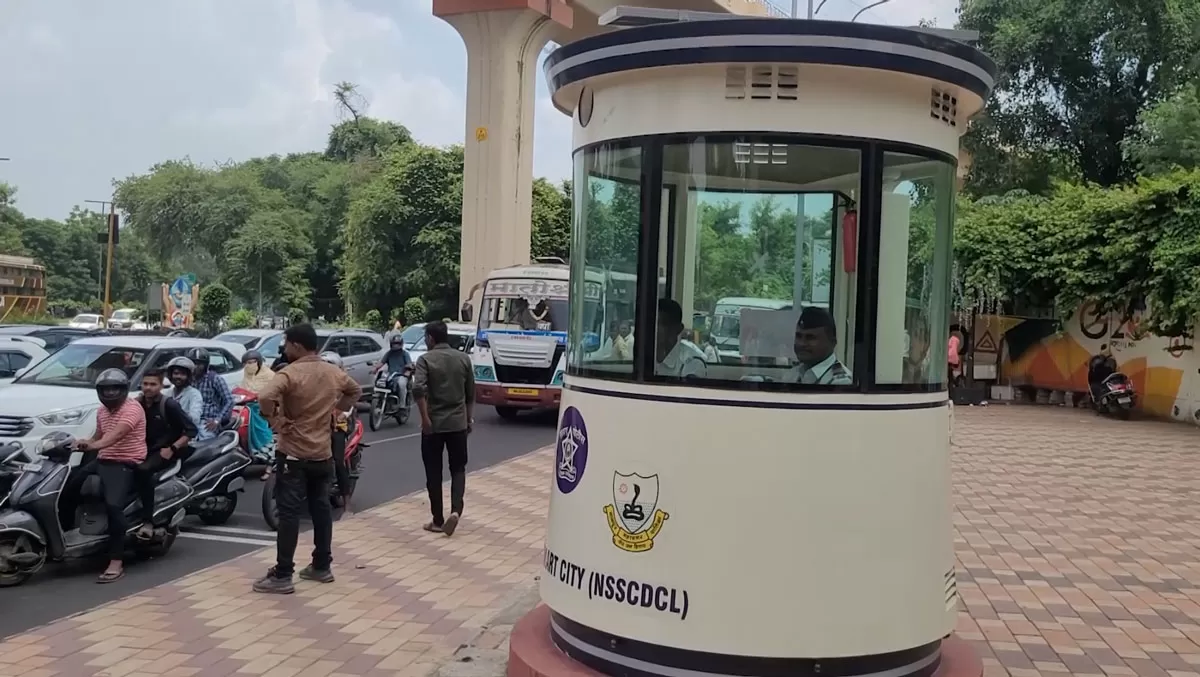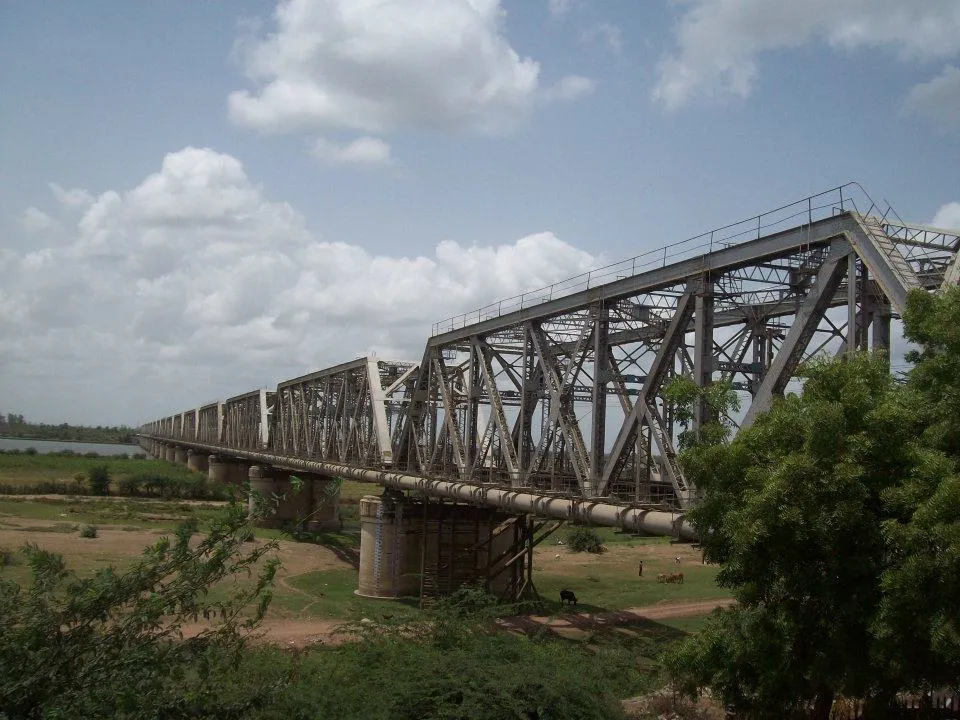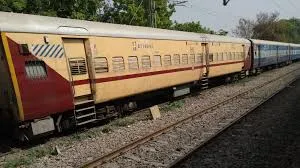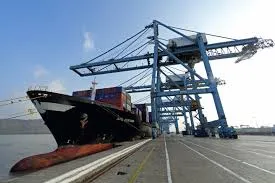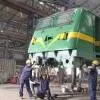The Nagpur Smart and Sustainable City Development Corporation (NSSCDCL) has bagged an excellence award for being a leader in creating healthy streets in Indian cities. Soumya Sharma Chandak, Chief Executive Officer (CEO), tells
R SRINIVASAN what led to this achievement and elaborates upon other successes and plans. Excerpts from the conversation:
What key factors contributed to NSSCDCL winning the excellence award for creating healthy streets in India?
We won this award for our efforts to suggest junction improvement and road design. In cities, while roads are developed, junctions are sometimes overlooked. And it is here that most issues happen as people tend to try to cross over from junctions or they become a point for illegal parking and hawking. So, from a pedestrian approach, we offered a design in which many technical experts were involved and local requirements were taken into consideration. This design, tuned with actual ground realities and more or less in sync with pedestrian requirements, is in the process of implementation by Nagpur Municipal Corporation (NMC).
What technologies, apart from AI, have been incorporated in Nagpur’s advanced command-and-control centre for features like voice analysis, facial recognition, live feeds, Big Data Analytics App etc?
The command-and-control centre has one of the largest such networks for any city with 3,600 CCTV cameras, all backed by the optic fibre cable (OFC) network. This system is not just used for crime detection; it is also being used by the civic administration. When Nagpur faced flash floods in September 2023, after one of the walls of the Ambazari dam got breached, our cameras were crucial in monitoring the situation. The police department is using our network and the SIMBA app to monitor all offenders. For automatic number plate recognition (ANPR), specialised cameras record all violations. And instead of merely depending on specialised cameras, we are trying to leverage AI to ensure that the regular feed can be mapped with AI to detect various types of violations that a regular ANPR and red-light violation detection (RLVD) camera would not do such as red-light violations, people not wearing helmets or jumping signals, triple seat riding, etc. In addition, facial recognition cameras using AI algorithms, in real time, have been placed at certain critical junctions.
Is the Rs.4.53 bn funding from the Central Government sufficient in view of the various projects planned?
The grant we received is sufficient for ongoing projects. However, if we look at projects from an operations and maintenance (O&M) point of view, some more grants would definitely be beneficial because the liberty of any project depends on the O&M part. As it is crucial right now, we raised this requirement with various departments of the state government. Certain projects that were completed successfully have been handed over to a successor agency. So, it could also be possible that the successor will get the funding or use its own funds.
What is the current status of NSSCDCL's demand of Rs.70 mn from NHAI and the state PWD, to recover damages caused by road construction activities to fibre cables supporting CCTV cameras?
We faced these issues when agencies took over the work without realising our cables were also involved in the process and damaged our network. Usually, before any kind of construction, agencies usually inform the broadband line provider and the water, telephone and electricity departments. We have been assured that whenever they make any project in future, they will include it as an ancillary cost and ensure we are remunerated.
What initiatives have been adopted for integrated water resource management to address the groundwater crisis highlighted in NITI Aayog’s Composite Water Management Index?
Water is a critical resource and water management is the need of the hour. In the area-based development (ABD) area, we have taken up the town planning scheme and ensured rainwater harvesting for various purposes. The Pohra river that flows through Nagpur carries a sufficient amount of wastewater with it, so we set up a 20-mld sewage treatment plant that is almost ready to be commissioned to purify the water in the ABD area. The Home Sweet Home housing society with around 150 flats is also equipped with rainwater harvesting.
What are the key features of new digital libraries in Nagpur?.
Under the Nagpur city mission, we took up three existing libraries – Pandit Deendayal Upadhyay (Laxmi Nagar), Kundanlal Gupta (Immamwada) and Rashtramata Kasturba libraries – and provided them with digital solutions in the form of desktops. We entered into an agreement with a vendor service provider who is providing e-books to these libraries and they have been converted into digital libraries with barcode-governed access. We have given students visiting the libraries barcode-enabled registration cards, which can be used to log in entry, exit, etc. Since we set up these computers, many people who are preparing for competitive exams have been using these libraries. We also provide a reading room with allied facilities. We recently did a soft launch of these libraries and introduced smart cards for the convenience of students to register from home and access a lot of books. We also intend to expand our collection of books further, depending on the demand from students.
What measures has Nagpur adopted under its Zero Carbon Buildings Action Plan to reduce greenhouse gas (GHG) emissions?
The following design interventions were executed in the 200 residential units and 20 commercial shops built as part of Nagpur Smart City's Home Sweet Home Project:
In this project to achieve low-impact design by using various passive and low-impact site planning strategies, strategies adopted are control of annual heat gain through favourable orientation and design of facades and internal zoning/layout of the floor plate.
The project has taken care to minimise the surface paved area onsite. The total site area is 9934.68 sq m of which the hardscape area of the site is about 26.9 per cent. The landscaped area is 15 per cent of the total site. The whole parking area is paved with open grid pavers to reduce the urban heat island (UHI) effect. The non-roof areas on the site are covered with light coloured paving blocks and the roof areas are covered with high SRI paint and photovoltaic panels. Some parts of the pathways are covered with tree shades.
The reinforcement steel and concrete used in the project along with masonry blocks are with low embodied requirement compared to conventional reinforcement steel and concrete and blockwork.
1,260-w LED street light pole octagonal single fitting 6 m long and 29 (2×60)-w LED street light pole octagonal double fitting
6 m long have been installed.
Construction waste has been properly managed onsite. Reusable scrap waste has been handed over to scrap dealers. Segregated areas for storage of construction waste were made. The quantum of waste (38179811.95 kg) generated onsite was handed over to the scrap vendor.
Recycled content materials have been used (provided by developer) for the project interiors. These materials include vitrified tiles, glass used for windows and ceramic tiles. Thus, the percentage of surface area with low environmental impact materials is above 75 per cent and attempting 4 points under this criterion.
Solar PV panels have
been installed.
Native species have been planted for landscaping and drip irrigation has been installed.
Owing to the use of Mivan construction, the amount of steel and cement used in the project has been optimised for the structural aspect; also, for the block work, fly ash has replaced cement by 15 per cent. Also, PPC has been used for plaster and mortar work with 34 per cent of fly ash and the mix design has used 30 per cent fly ash. The reduction in embodied energy for structural applications is
22 per cent.
To decrease direct solar radiation and lessen heat penetration into the building, the design includes balconies on the southern and southwestern exposures.
The project has selected high-performance glass of SHGC 0.46, which helps cut down excess radiation and thus maintains a cooler indoor environment. In addition, the window-to-wall ratio (WWR) of the building has been reduced considerably. The facade consists of windows and not structural glazing.
What are the key takeaways from your other smart city projects?
The integrated traffic management system is being implemented by the Nagpur Municipal Corporation; however, they will be utilising our smart city OFC network to ensure traffic signals are synchronised and work intelligently and smartly. We also did bio mining in the biggest landfill of Nagpur. Also, in keeping with Supreme Court judgements and the Manual Scavengers and Their Rehabilitation Act 2013, we have employed a robotic device,
Robo Scavenger, which has eliminated the need for any sort of human intervention, apart from operations of the robotic arm.
These manholes are being cleaned on a regular frequency by the machines. So, that is a really positive project that all cities can emulate because with these robotic devices, sanitation workers will not need to enter the manholes.
Further, we have smart traffic booths. Traffic policemen have to be outside in the heat and rain, and usually don't have a place to sit. The smart traffic booth is equipped with a PA system, solar lighting and seating arrangements so that traffic policemen can monitor traffic, irrespective of the weather.
In summary, NSSCDCL's comprehensive urban initiatives not only contribute to Nagpur’s development but also set a benchmark for sustainable and smart city projects across India.
